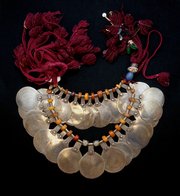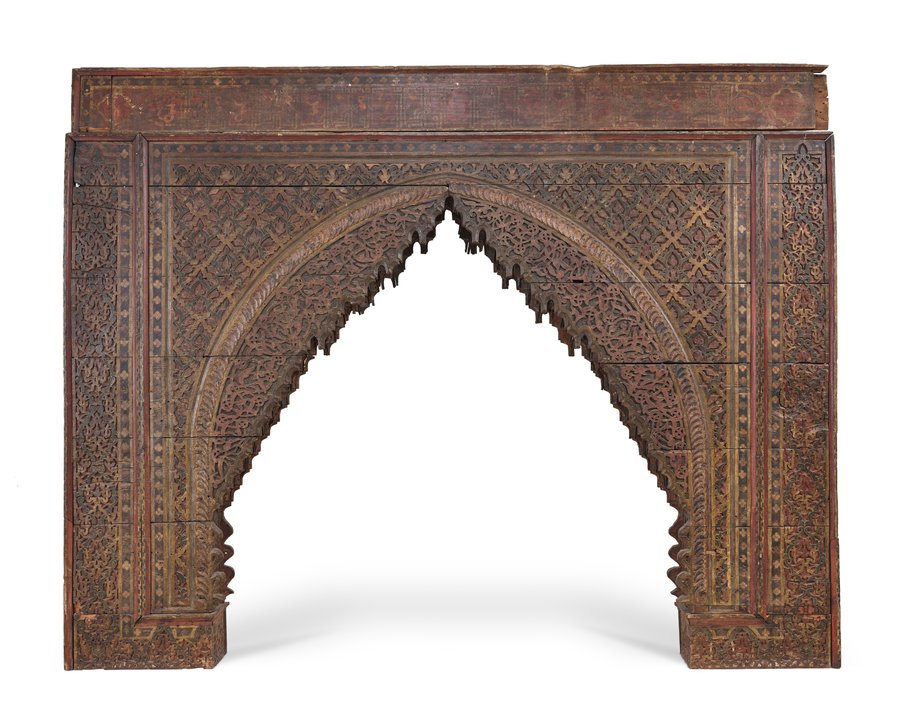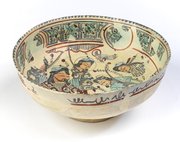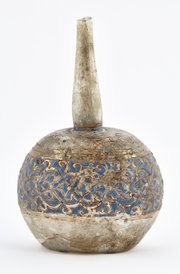
Saadian Wooden Arch
Museum of Islamic Art
- Title:
- Saadian Wooden Arch
- Production place:
- Morocco
- Date:
- 1555 - 1700
- Period:
- Saadian
- Title:
- Saadian Wooden Arch
- Production place:
- Morocco
- Date:
- 1555 - 1700
- Period:
- Saadian
- Material:
- Wood, Pigment, Iron
- Technique:
- Carving, Assembling, Painting
- Dimensions:
- 202 × 258 × 31
This arch is characteristic of Moroccan architecture of the Saadian and Alawite periods. It could have been part of a wealthy house, a palace, or a religious building, such as a mosque or a madrasa. The madrasa also serves as the main location for a Sufi confederation and often would be used for the teaching of the members of the brotherhood, as well as the place where is buried the saintly figure who would generally the founder. The overall decoration follows the use of the lambrequin technique in architecture, combining carved and painted stylized vegetal and geometric motifs with muqarnas on the intrados of the arch. Medieval buildings in Morocco, particularly in Fez demonstrate the use of this technique in both stonework, stucco and woodwork. The 8th century AH/14th century CE madrasa Bu Inania in Fez is an example of this combination where similar wooden arches decorate the higher part of the elevations. The wooden structures of the Qarawiyyin Mosque in Fez show similarities, as well as a clear influence from Nasrid architectural decorations, especially that of the Alhambra in Granada.



